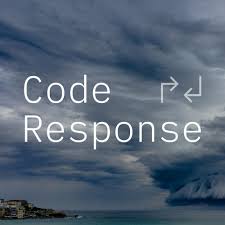 Vulnerabilities in the power grid are one of the most prevalent national security threats. The technical community has called for building up the resiliency of the grid using distributed energy and microgrids for stabilization. Power production from multiple sources increases the difficulty of triggering cascading blackouts, and following an attack or natural disaster, microgrids can provide localized energy security...
Vulnerabilities in the power grid are one of the most prevalent national security threats. The technical community has called for building up the resiliency of the grid using distributed energy and microgrids for stabilization. Power production from multiple sources increases the difficulty of triggering cascading blackouts, and following an attack or natural disaster, microgrids can provide localized energy security...
natural disasters
See the following -
How Crisis Mapping Saved Lives in Haiti
The National Geographic Society has a long history of crisis mapping disasters. But what happened in Haiti on January 12, 2010 would forever change the very concept of a crisis map. Read More »
- Login to post comments
How DoD Plans to Leverage Artificial Intelligence and Open Source to Improve Emergency Response and Disaster Relief
 Some might not know it, but the US military plays a key role in US disaster response strategy and, accordingly, the Department of Defense (DoD) has prioritized its disaster response mission and is investing heavily towards increasing its capabilities and effectiveness. Technology is a big part of all modern DoD missions, and disaster response is no different. The most promising and transformative technology on the horizon for our future, and for the future of the DoD, is Artificial Intelligence (AI). So how exactly will the DoD leverage Artificial Intelligence technologies in order to meet the demands of the disaster response mission? Is a new Center of Excellence created by DoD, called the Joint Artificial Intelligence Center (JAIC). Read More »
Some might not know it, but the US military plays a key role in US disaster response strategy and, accordingly, the Department of Defense (DoD) has prioritized its disaster response mission and is investing heavily towards increasing its capabilities and effectiveness. Technology is a big part of all modern DoD missions, and disaster response is no different. The most promising and transformative technology on the horizon for our future, and for the future of the DoD, is Artificial Intelligence (AI). So how exactly will the DoD leverage Artificial Intelligence technologies in order to meet the demands of the disaster response mission? Is a new Center of Excellence created by DoD, called the Joint Artificial Intelligence Center (JAIC). Read More »
- Login to post comments
How Health IT Benefits From Obama's Re-election
The day after President Obama was re-elected and Democrats held onto control of the U.S. Senate, the future looked bright to folks in the health IT field. Read More »
- Login to post comments
How Laboratories and their Systems can Weather Natural Disasters and Pandemics
 We are currently experiencing a global pandemic - which, while perhaps included in disaster preparedness Standard Operating Procedures (SOPs) by many labs as a possible disaster, still has caught most the infrastructure and health systems of most nations largely unprepared, and is causing major disruption because it was arguably not seen as one of the most likely events. Disaster preparedness has typically tended to focus on IT and data management risks and/or natural disasters. SOPs center around standard, daily lab safety. The truth is that whatever the odds of a particular disaster, they become 100% once they happen. It's important to have sufficient risk-reduction SOPs in play, and a good Continuity Of Operations Plan (COOP) for each potential scenario to ensure the best chance of coping during the event and recovering afterwards.
We are currently experiencing a global pandemic - which, while perhaps included in disaster preparedness Standard Operating Procedures (SOPs) by many labs as a possible disaster, still has caught most the infrastructure and health systems of most nations largely unprepared, and is causing major disruption because it was arguably not seen as one of the most likely events. Disaster preparedness has typically tended to focus on IT and data management risks and/or natural disasters. SOPs center around standard, daily lab safety. The truth is that whatever the odds of a particular disaster, they become 100% once they happen. It's important to have sufficient risk-reduction SOPs in play, and a good Continuity Of Operations Plan (COOP) for each potential scenario to ensure the best chance of coping during the event and recovering afterwards.
- Login to post comments
How Technology Can Help Mitigate Hurricane Harvey-Like Disasters
Unfortunately, we don’t yet have technology that can prevent a storm of the magnitude of Hurricane Harvey from devastating our cities and towns. But it can help in the response, and even provide valuable information for citizens trying to survive a catastrophic event. One key is properly locating backup and recovery systems for government agencies. Typically, most cities and towns with a backup plan for their data rely on nearby data centers. That’s fine if there is a fire at the local office building or something that forces the temporary closure of government buildings...
- Login to post comments
Hurricane Irma Just Made a Digital Walkie-Talkie the No. 1 App Online
As Hurricane Harvey dropped anchor over Southeast Texas last week, Zello became the go-to app for rescuers working to save thousands of people trapped by floodwaters. Within days of Harvey's arrival, the app saw a 20-fold increase in usage in Houston, according to Bill Moore, the Austin based startup's the chief executive. As Hurricane Irma hurtles across the Caribbean toward the coast of Florida, Zello continues to boom in popularity. The free Internet "walkie-talkie" app - which relies on cellphone data plans or WiFi and is designed to operate in places where signals are weak - became the top app on iTunes and Google Play Wednesday...
- Login to post comments
IBM Announces Additional $25 Million Investment to Develop Open Source Tech for Disaster Response
 IBM today announced Code and Response, a new $25 million, four-year deployment initiative to put open source technologies developed as part of coding challenges such as Call for Code in the communities where they are needed most. Code and Response includes resources to build, fortify, test, and implement solutions at scale. The initiative is supported by hundreds of IBMers as part of the IBM Corporate Service Corps, as well as government and NGO partners to put those technologies to work saving lives.
IBM today announced Code and Response, a new $25 million, four-year deployment initiative to put open source technologies developed as part of coding challenges such as Call for Code in the communities where they are needed most. Code and Response includes resources to build, fortify, test, and implement solutions at scale. The initiative is supported by hundreds of IBMers as part of the IBM Corporate Service Corps, as well as government and NGO partners to put those technologies to work saving lives.
- Login to post comments
IBM Commits $30 Million Towards Open Source Disaster Response Tech
 IBM and partners today launched the Call for Code Global Initiative, the largest and most ambitious effort to bring startup, academic and enterprise developers together to solve one of the most pressing societal issues of our time: preventing, responding to and recovering from natural disasters. During a keynote address at the VivaTech Conference in Paris, IBM Chairman, President and CEO Ginni Rometty called on the technology industry to help build a better future, committing IBM technology and $30 million USD over five years in the annual Call for Code Global Initiative. Its goal is to unite the world's developers and tap into data and AI, blockchain, cloud and IoT technologies to address social challenges.
IBM and partners today launched the Call for Code Global Initiative, the largest and most ambitious effort to bring startup, academic and enterprise developers together to solve one of the most pressing societal issues of our time: preventing, responding to and recovering from natural disasters. During a keynote address at the VivaTech Conference in Paris, IBM Chairman, President and CEO Ginni Rometty called on the technology industry to help build a better future, committing IBM technology and $30 million USD over five years in the annual Call for Code Global Initiative. Its goal is to unite the world's developers and tap into data and AI, blockchain, cloud and IoT technologies to address social challenges.
- Login to post comments
Improved Routine Access To Health Data Ensures Disaster Preparedness
State health information exchanges can best prepare for emergencies by ensuring that health information is readily accessible during routine care, concludes a report (.pdf) from the Southeast Regional HIT-HIE Collaboration published in July. But the report finds day-to-day health information sharing is a challenge, as individual state's efforts and HIE implementation timelines vary considerably. Read More »
- Login to post comments
In Disasters Such as Hurricanes, HIE Is 'As Critical as Having Roads, as Having Fire Hydrants'
 The Statewide Health Information Network of New York (SHIN-NY) sees itself as a "public utility" as much as an HIE. In the wake of Hurricane Sandy, as patients bounce between hospitals (and as other public utilities, such as electricity and transportation, are compromised), it has enabled critical continuity of care. The images of dozens of red-flashing ambulances, evacuating as many as 200 patients – some of them in critical condition, some of them infants – from NYU Langone Medical Center, whose backup generator had failed, to hospitals such as Sloan-Kettering and NewYork-Presbyterian, will be some of the most enduring images from the super storm. The harrowing process was made much smoother by the fact that those patients' electronic health records were secure and readily accessible at the hospitals to which they were thanks to New York's statewide HIE... Read More »
The Statewide Health Information Network of New York (SHIN-NY) sees itself as a "public utility" as much as an HIE. In the wake of Hurricane Sandy, as patients bounce between hospitals (and as other public utilities, such as electricity and transportation, are compromised), it has enabled critical continuity of care. The images of dozens of red-flashing ambulances, evacuating as many as 200 patients – some of them in critical condition, some of them infants – from NYU Langone Medical Center, whose backup generator had failed, to hospitals such as Sloan-Kettering and NewYork-Presbyterian, will be some of the most enduring images from the super storm. The harrowing process was made much smoother by the fact that those patients' electronic health records were secure and readily accessible at the hospitals to which they were thanks to New York's statewide HIE... Read More »
- Login to post comments
In Hurricane’s Wake, Decisions Not To Evacuate Hospitals Raise Questions
 Now, in the late evening hours, the worst-case scenario was unfolding at the main campus of NYU's Langone Medical Center in Manhattan, which had lost much of its backup power at the height of the storm. Could North Shore-LIJ dispatch ambulances from its Lenox Hill Hospital in New York City to pick up four critically ill babies from the neo-natal intensive care unit? New York City hospital and nursing home patients and their loved ones might reasonably have believed they were safe as Hurricane Sandy approached. Mayor Michael Bloomberg had exempted hospitals and nursing homes in low-lying "Zone A" areas of the city from his pre-storm evacuation order. Much thought and planning had gone into the decision to "shelter in place."
Now, in the late evening hours, the worst-case scenario was unfolding at the main campus of NYU's Langone Medical Center in Manhattan, which had lost much of its backup power at the height of the storm. Could North Shore-LIJ dispatch ambulances from its Lenox Hill Hospital in New York City to pick up four critically ill babies from the neo-natal intensive care unit? New York City hospital and nursing home patients and their loved ones might reasonably have believed they were safe as Hurricane Sandy approached. Mayor Michael Bloomberg had exempted hospitals and nursing homes in low-lying "Zone A" areas of the city from his pre-storm evacuation order. Much thought and planning had gone into the decision to "shelter in place."
- Login to post comments
Innovation At VA: App Offered To Hurricane Sandy Victims
A mobile app originally developed to aid veterans has been offered to mental health personnel helping Hurricane Sandy's victims, an example of how innovation and technology within the federal government can have a broader reach than ever before. Read More »
- Login to post comments
International Meeting Of Crowdsource Mapping Successfully Concluded
On 5 December 2012, UN-SPIDER concluded a three-day international expert meeting on the topic of Crowdsource Mapping for Disaster Risk Management and Emergency Response. Read More »
- Login to post comments
Introducing CrisisNET
At Ushahidi, we love helping people turn data into social impact. We’ve helped thousands of users gather and manage crowdsourced data during everything from natural disasters to political revolutions. When Ushahidi was founded in 2008, our tools provided a rare and valuable source of crisis-relevant data to citizens, policy makers, and responders. Since then, we’ve watched the volume and variety of crisis data go from a trickle to a flood. Read More »
- Login to post comments